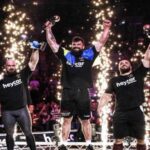Make sure you personalize your marketing for multiple personas.
A common mistake that many companies make is using a “one-size-fits-all” approach to its marketing efforts. Said another way, the company comes up with one marketing strategy, uses mass marketing techniques and the same messaging to everyone that sees its advertising. Yes, that is a simple approach, and saves you time and efforts required to customize your messaging to specific sub-audiences. But if you are looking to maximize your return on marketing spend, that additional upfront investment in building customer personas (sub-audiences) and a customer journey flow (from upper funnel to lower funnel) will pay back in spades. So, don’t be a penny wise in the short run and pound foolish for the long run. The more you personalize your messaging to the exact target, and where they are in the buying process, the more it will help you put your marketing efforts on steroids. This post will help you learn how to do exactly that.
What is a Customer Persona?
A customer persona is the sub-audience of users that are buying your product or service. If you are a consumer business, maybe that is men vs. women buyers, or older vs. younger buyers, or which target products they are most interested in (e.g., coffee drinkers vs. tea drinkers). If you are a B2B business, maybe that is customers from one industry or another, or buyers at different levels of the organization (e.g., executives vs. lower level managers) or different size of companies (e.g., enterprise vs. small business). Every single one of these sub-audiences, should receive marketing messages from you that are directly relevant to them.
What is the Customer Journey?
The customer journey is the path in which a customer researches, considers and ultimately purchases products or services. A customer that is researching to figure out what it needs is typically upper funnel, a customer that knows what it wants and is considering various vendors or solutions is middle funnel, and a customer that is price shopping and ready to pull the trigger is lower funnel. Why does that matter? Your marketing messaging should be tailored to where they are in their customer journey.
Someone that is upper funnel needs to know why they need a solution in the first place, someone that is middle funnel needs to know your product is better than others in the market, and someone that is lower funnel may be stimulated by a promotional offer to save 10% if they purchase by the end of the month.
And the marketing tools you use to communicate with them will be different—from mass marketing tactics (e.g., TV, radio, print, search engines) for upper funnel down to one-on-one marketing tactics (e.g., emails, phone calls) for the lower funnel. So knowing your customer journey and which media are best to communicate with your targets is a critical component to personalizing your marketing messaging.
This article I wrote on mastering your marketing funnel and media mix may help you with this process.
What does Personalizing Marketing Actually Mean?
Personalizing your marketing means you need different marketing creatives for each sub-audience. Let’s say you have three core personas and three stages of the marketing funnel, that would be a total of nine different creatives that need to be created (not just one). And in those creatives, use images and copy that actually will resonate with that sub-audience. So, if speaking to men, use male models in your creatives. If speaking to older people, put older people in your creatives. If pushing a specific industry use case, speak to that industry expertise in your creatives. If speaking to executives, promote the strategic benefits of your product, vs. the more tactical functionalities that would be better promoted to lower level employees. You get the point—don’t spray and pray. Be laser focused with your targeting and messaging, and good things should happen to accelerating your sales.
What Can You Expect to Happen from Personalization?
With every layer of personalization, you can expect to increase your conversion rate, and ultimately your sales. So, as an example, let’s say the one-size-fits-all approach allows you to convert 10% of your leads. Layering on the customer personas may allow you to convert 20% of your leads. And further layering on the customer journey messaging may allow you to convert 30% of your leads. The better you sharpen your pencil, the higher your resulting revenues will be. Any good marketing agency can help you here.
Tracking Is Critical
Setting up the customer personas, journey and creatives is only part of the exercise. The other part is tracking the results from each of those sub-audiences. So, when setting up your campaigns, tracking URLs or other conversion metrics, make sure the appropriate tagging and tracking is in place, so that your CRM can easily see how the different personas are performing at driving sales. You may learn that each persona behaves equally the same, and deserves equal attention. Or, you may learn certain personas are outperforming others, and needs your oversized attention and budget, redirecting efforts away from your other underperforming personas. So, in all cases, the devil is in the details, and you need to be tracking and optimizing everything.
Closing Thoughts
The concepts presented in this post are “table stakes” in the marketing world, and it amazes me how many early stage companies have absolutely no clue here. If you are not doing it, you are potentially wasting a lot of your marketing dollars. Or at a minimum, not driving an ROI as high as you ultimately should be. So, either hire a strong marketing team, or engage a strong marketing agency, for your business. They can help lay the groundwork here, and ultimately tee you up for maximum marketing success. Good luck!!
—
George Deeb is a Partner at Red Rocket Ventures and author of 101 Startup Lessons-An Entrepreneur’s Handbook.






